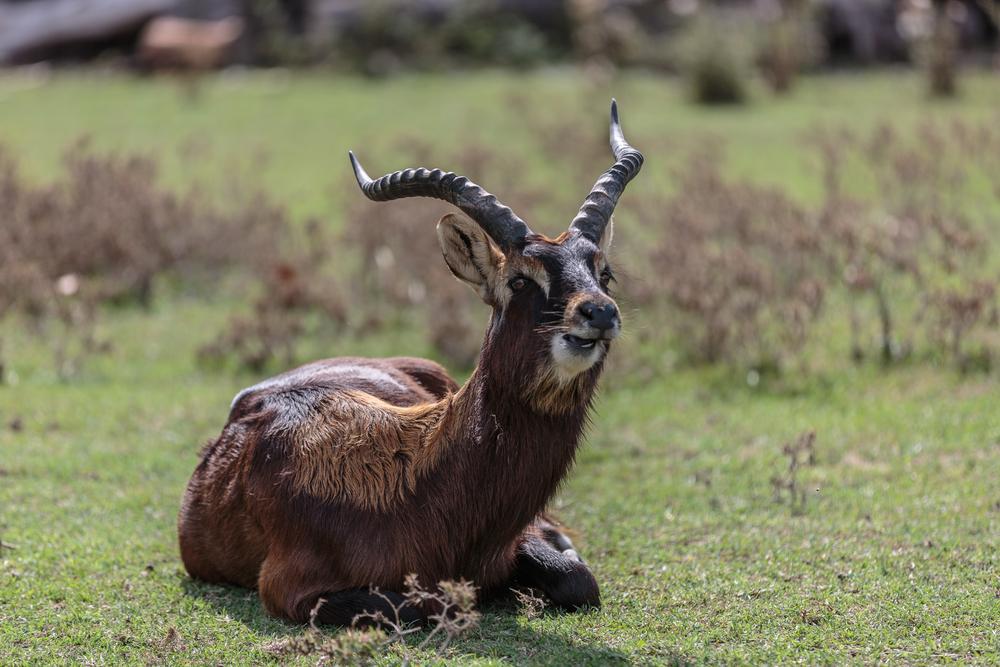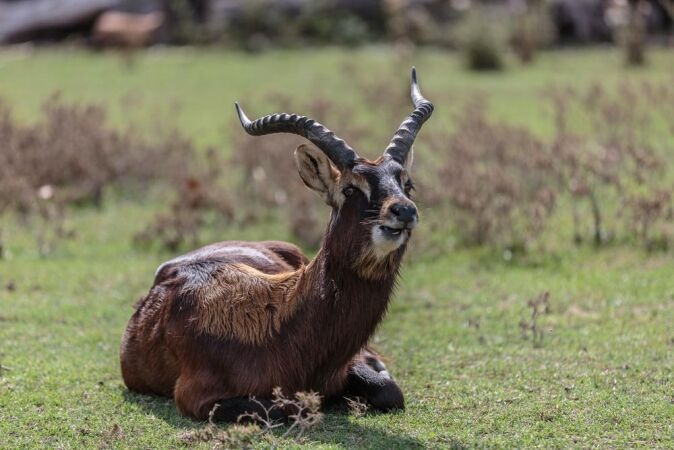

When a person considers plains game hunting in Africa, the Nile lechwe (Kobus megaceros) may not be the first animal that comes to mind. Yet, this antelope proves to be a worthy adversary when game hunting in Africa. Also known as Mrs Gray’s lechwe, it is native to Ethiopia and Sudan and holds an “endangered” status with the International Union for Conservation of Nature (IUCN). Their numbers are declining and they can only be hunted with a special permit or tag in both Ethiopia and Sudan.
The Nile lechwes’ habitat consists of swamps and grasslands and they have short migratory routes of 18-25 miles as they follow the rise and fall of the floodplains. They are diurnal and sociable creatures, living in large herds of 50-500 animals, although bachelor herds have also been noted.
They sexually mature at about 2 years, with breeding taking place year-round although there is an annual peak between February and May. The female gives birth to one calf after a 7-9 month gestation period. She hides the calf in dense bush for the first two weeks, after which it will join the herd. The calf will be fully weaned by six months.
They are crepuscular and tend to be more active in the early morning or late afternoon as they forage for food in the marshy areas. They paddle in shallow water between 3-16 inches where they find their main food sources. They are herbivorous and their diet consists of grass, twigs, bushes, marsh vegetation, and fruit. During the rainy season, they will also indulge in rice.
Man is not the only animal targeting this African plains game species, with the Nile lechwe serving as prey for lions, Nile crocodiles, pythons, spotted hyenas, and leopards, although there are fewer predators due to their chosen habitat. When attacked, they will flee into knee-deep water where they easily run, reaching up to 37 miles per hour. A female will defend her young with some swift kicks of her strong back legs.
Name:
Kobus Megaceros
Weight:
200-260 pounds
Shoulder Height:
39-41 inches
Range:
Ethiopia and Sudan
Horns:
Only males grow horns
Gestation Period:
7-9 months
Life span:
10-12 years
The Nile lechwe is an endangered antelope hunted by special permit in both Sudan and Ethiopia.
When game hunting in Africa, look for a medium-sized antelope with a shaggy coat and long hair on their cheeks. Females' and juveniles’ coats are brownish-gold in color while males have a darker, brownish-black coat. Males also have a white saddle over their shoulder area, with some white markings on their faces. Only males have horns, that can reach up to 34 inches in length. Males are larger than their female counterparts, weighing 200-260 pounds and standing 39-41 inches at the shoulder. Females weigh 130-200 pounds and stand 31-33 inches at the shoulder.
The primary method of game hunting the Nile lechwe is through the walk and stalk method. As only the males have horns, choosing a suitable African plains game trophy should be an easy task.
When it comes to lechwe hunting in Africa, any 30-caliber loaded with 165 grains will work well. A better choice would be the flatter shooting 7mm Magnum. A .270 with an excellent quality expanding bullet can get the job done. A bigger caliber such as the .375 with a 300-grain solid bullet can also be used.
The Nile lechwe is a beautiful example of plains game hunting in Africa and a worthy addition and to any game hunting trophy room! The horn trophy is judged by the length and circumference around the bases, so choose well and aim straight to bag a truly remarkable specimen as a great reward from a successful game hunting adventure.
Search from our range of Hunts across various popular destinations in Africa.
Find A Hunt